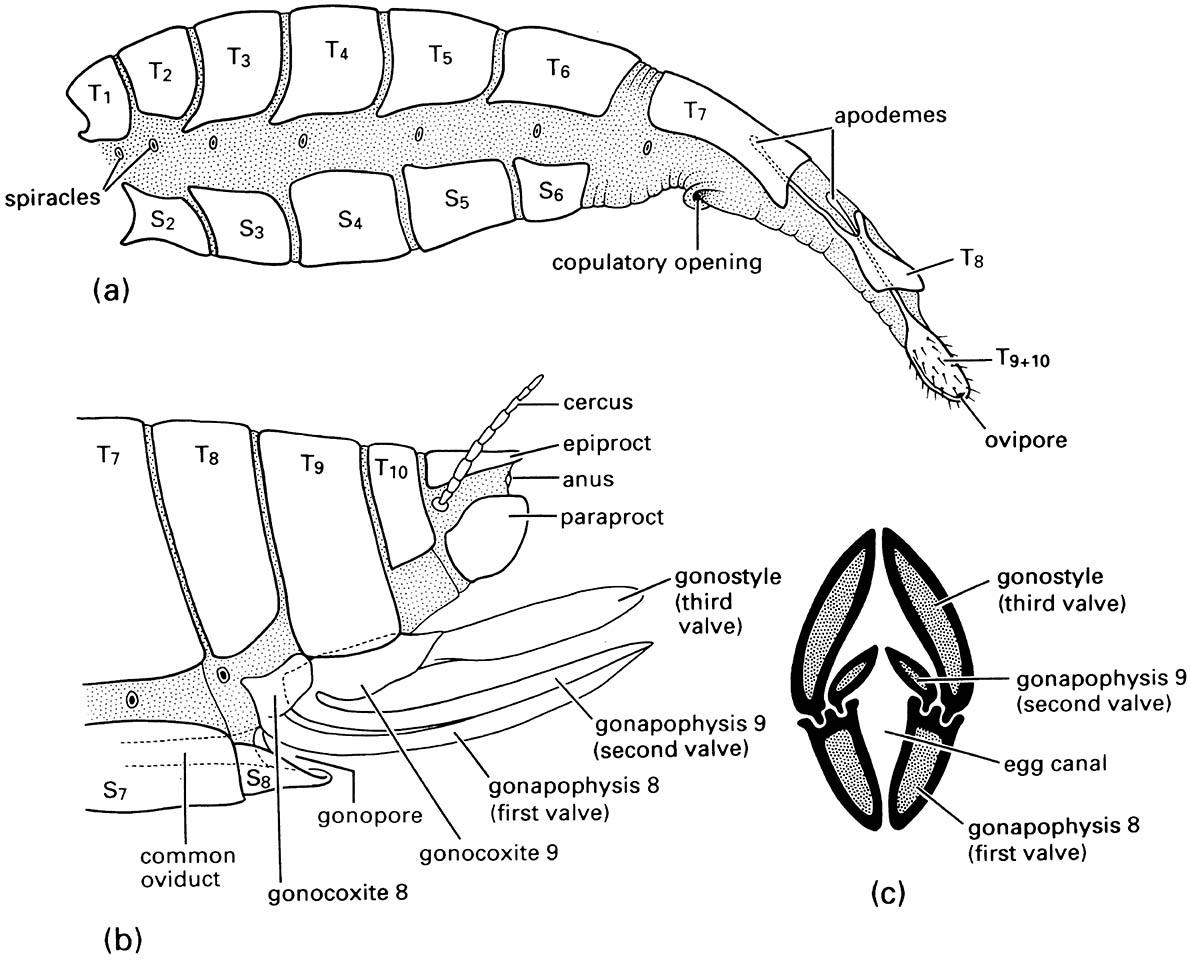2.5. The abdomen
Primitively, the insect abdomen is 11-segmented although segment 1 may be reduced or incorporated into the thorax (as in many Hymenoptera) and the terminal segments usually are variously modified and/or diminished (Fig. 2.23a). Generally, at least the first seven abdominal segments of adults (the pregenital segments) are similar in structure and lack append-ages. However, apterygotes (bristletails and silverfish) and many immature aquatic insects have abdominal appendages. Apterygotes possess a pair of styles — rudimentary appendages that are serially homologous with the distal part of the thoracic legs — and, mesally, one or two pairs of protrusible (or exsertile) vesicles on at least some abdominal segments.
These vesicles are derived from the coxal and trochanteral endites (inner annulated lobes) of the ancestral abdominal appendages (Fig. 8.4b). Aquatic larvae and nymphs may have gills laterally on some to most abdominal segments (Chapter 10). Some of these may be serially homologous with thoracic wings (e.g. the plate gills of mayfly nymphs) or with other leg derivatives. Spiracles typically are present on segments 1–8, but reductions in number occur frequently in association with modifications of the tracheal system (section 3.5), especially in immature insects, and with specializations of the terminal segments in adults.

(a) lateral view of the abdomen of an adult tussock moth (Lepidoptera: Lymantriidae) showing the substitutional ovipositor formed from the extensible terminal segments; (b) lateral view of a generalized orthopteroid ovipositor composed of appendages of segments 8 and 9; (c) transverse section through the ovipositor of a katydid (Orthoptera: Tettigoniidae). T1—T10, terga of first to tenth segments; S2—S8, sterna of second to eighth segments. ((a) After Eidmann 1929; (b) after Snodgrass 1935; (c) after Richards & Davies 1959)

(a) thoracic segment of adult showing generalized condition of appendages; (b) dorsal view of nymphal morphology. (Modified from Kukalová-Peck 1991; to incorporate ideas of J.W.H. Trueman (unpublished))

